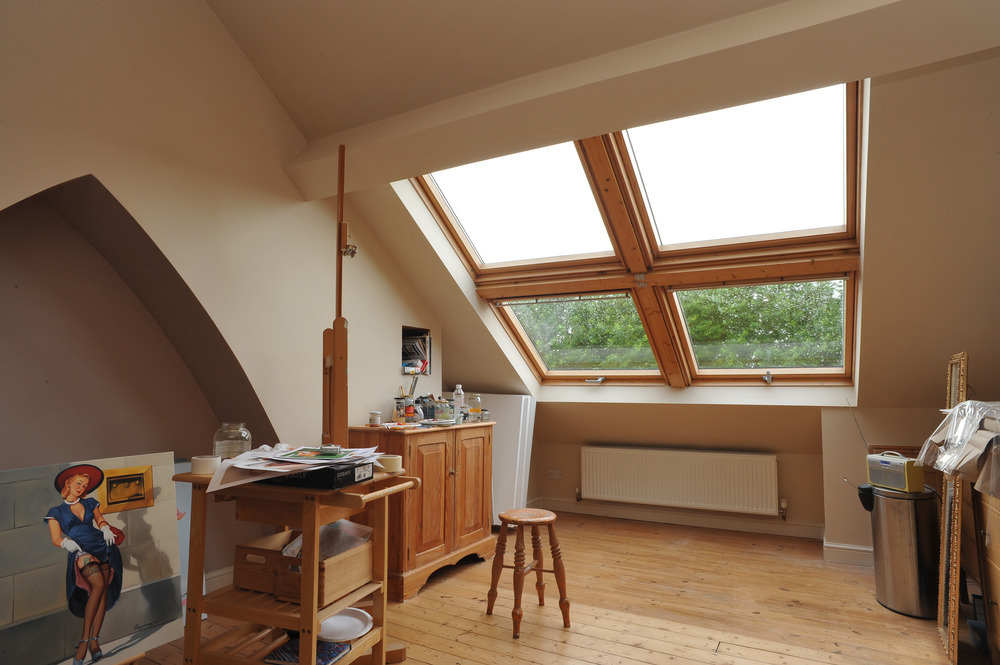Lofts are predominantly used for storage, but fully converting your loft is a great idea if you need to create some extra living space or if you want to increase the value of your home. The job is not a small one though, and there are several major considerations that need to be taken into account during the planning stage. Everything from practical constraints to time, budget and personal tastes factors into the final decision.
To give you a better idea of what you need to think about, read the below ABCs of a loft conversion.
Access
Building regulations will apply and if you plan on converting your loft into a bedroom, a bathroom or a study you need to have permanent access. That means ditching even the sturdiest of loft ladders and opting for a staircase instead. You may have to decide whether a traditional straight-up staircase is the most practical option or if you need to save space with a spiral staircase. Whatever you choose, be sure that you put safety and practicality first. Also consider things like head room and hand rails when planning.
Building Basics
When converting your loft you need to pay close attention to the basics of building work. Before getting carried away with the decorative architecture and design, you need to focus on making your loft cleaner, safer, sturdier and more architecturally sound. You should start by getting a professional to assess the strength and the load-bearing capabilities of the loft floor. Once you have confirmation that the space is safe, you can move onto practical steps like laying down loft boarding and finishing the walls and ceiling. Once you have these finished, you will have smooth, solid surfaces and the shell of an actual room. Of course, you will also have to consider things like the entrance, the windows, plumbing, electricity and the like. Ultimately, anything practical that will help make the loft safer and more fit for use is what you need to take care of during the building basics stage.
Considerations
As with any building project, certain rules and regulations apply when converting your loft. Your first task is to obtain planning permission from your local authority, so you will need to look into and abide by their policies. Certain considerations include things like Party Wall rules which apply to terraced homes (www.rics.org/partywalls). There will also be very specific building regulations which you will need to research and adhere to. Once you understand your physical and procedural limits, you should calculate a conservative budget in order to ensure you can cover the costs of the project. Try to be over-cautious so you have extra aside should any last minute hiccups crop up. Remember too that any “habitable space” must comply with the regulations regarding energy efficiency, fire safety, ventilation, insulation and lighting.
Design
The design of your loft will depend on a number of different factors; your space, budget and time constraints, the room’s intended purpose and your personal preferences. There really are so many different ways to make the most of a converted loft space; some cater for all the family but others are meant to cater for select individuals in need of extra or their own space. There are all sorts of popular uses for converted loft spaces; guest or main bedrooms, extra bathrooms, home offices, children’s dens, man caves and crafty corners are all excellent choices. Once you know the purpose of your new loft space, you can start factoring in things like furniture (freestanding or built in with plenty of storage?), décor (lots of colour or keeping things light and airy?) and finishing touches like curtains, carpets and decorative or architectural features.
Energy Efficiency
We live in the Green Generation, so you will need to ensure your loft conversion meets all the standards for energy efficiency. You will need to consider things like installing the right loft insulation (usually rock wool or spray foam insulation) as well as finding the right double glazed windows. Your windows will need to let in light, offer enough headroom (either as a skylight or as a dormers) and meet the energy efficiency standards, so it is best to source them from specialist brands like market leader Velux. Once you properly insulate and finish off you’re the basic structure of your loft conversion, you will find yourself with a comfortable space that not only keeps energy emissions and energy bills low, but also keeps cool in the summer, warm in the cold and dry all year round.
Of course, these ABCs are just a fraction of what you need to address and think about when converting your loft. You should aim to spend the majority of your time planning the conversion and everything to do with it, to ensure the conversion process is smooth. It is always best to do your research and seek advice and services from professionals when unsure. Once all the planning, preparation and hard work is done, the result will be well worth it.
